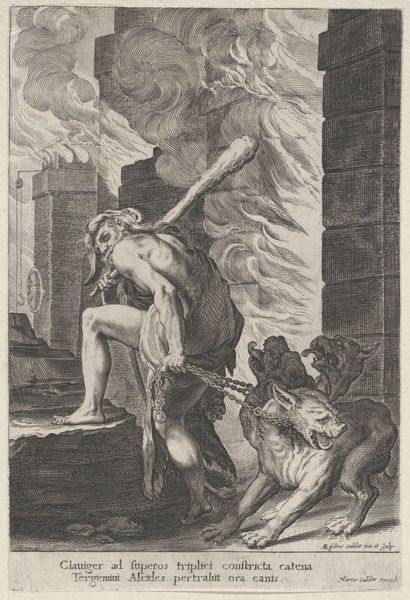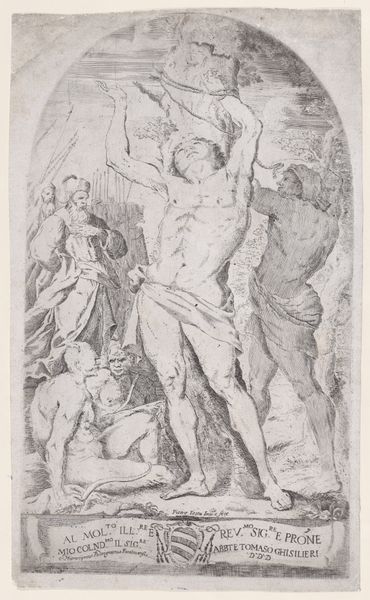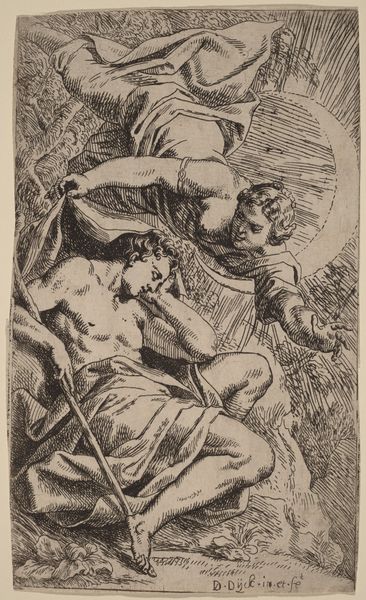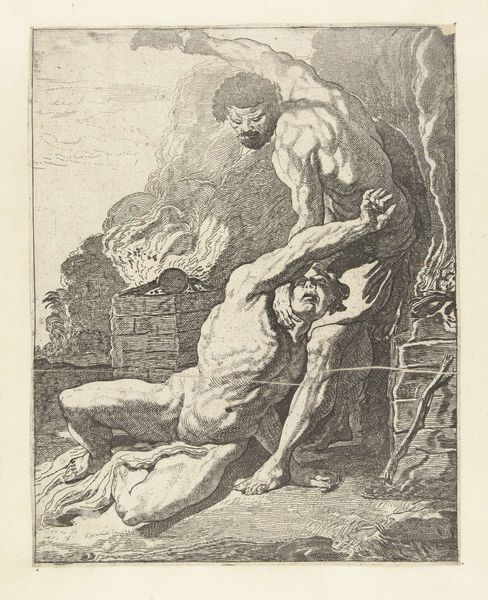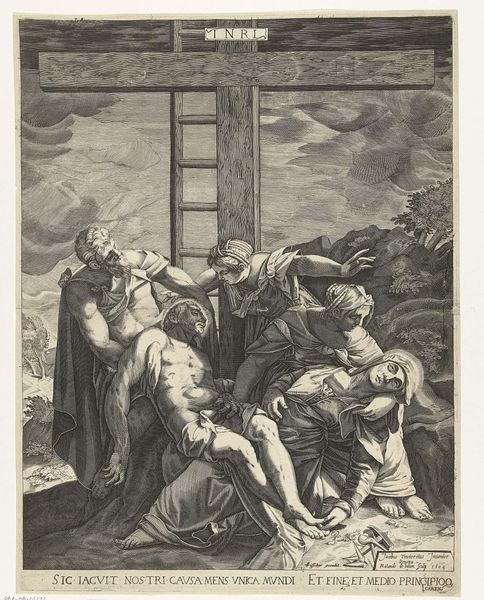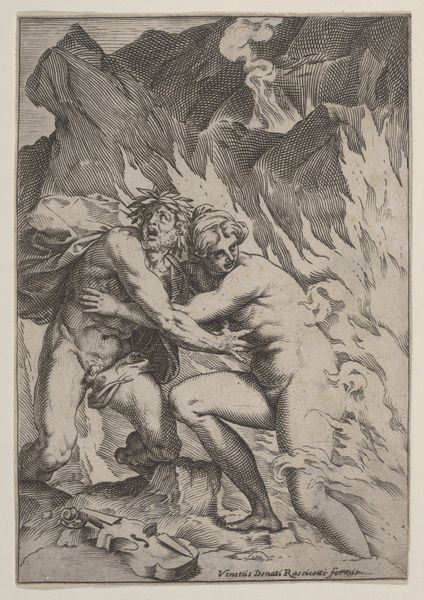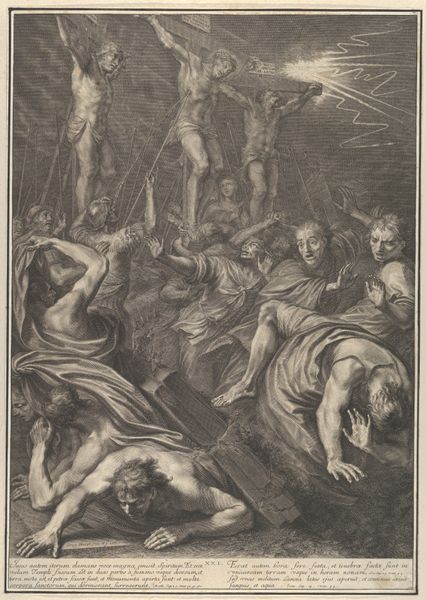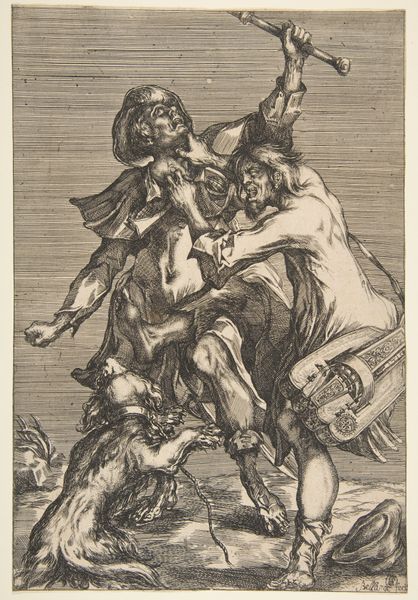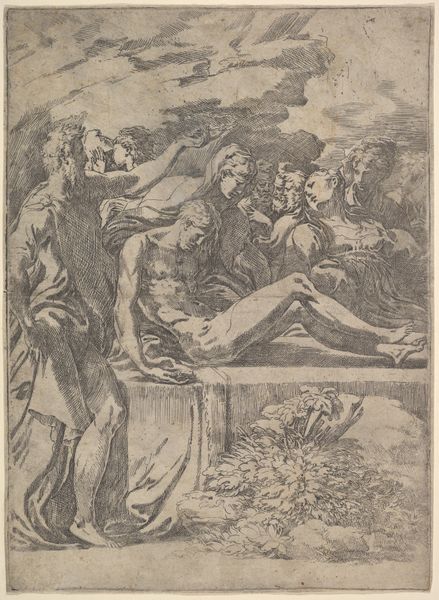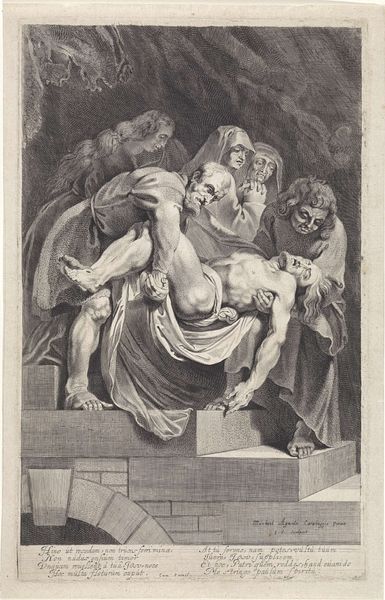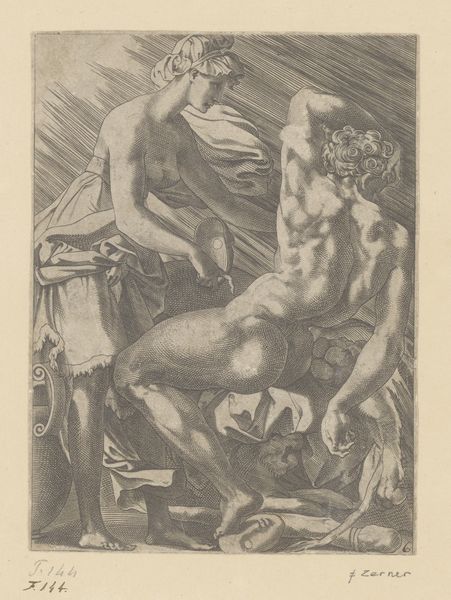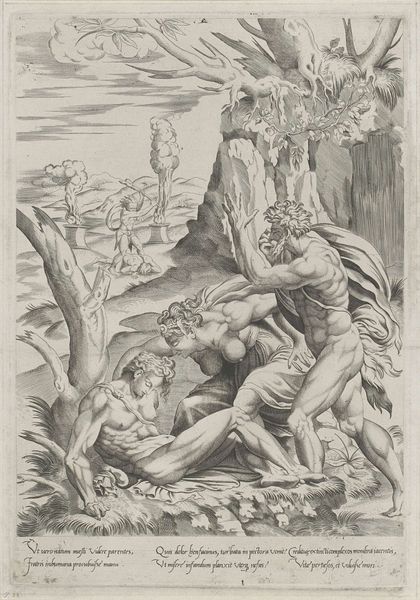
print, intaglio, engraving
#
narrative-art
# print
#
intaglio
#
mannerism
#
figuration
#
history-painting
#
engraving
Dimensions: height 222 mm, width 181 mm
Copyright: Rijks Museum: Open Domain
Editor: This is "Hercules vecht met de Cerberus" – Hercules fighting Cerberus – an engraving by Giovanni Jacopo Caraglio, dating somewhere between 1515 and 1565. The incredible detail achieved through the intaglio process is striking. How should we approach understanding this piece beyond its immediately visible subject? Curator: I find it vital to examine the labor invested and the materiality itself. Intaglio, particularly engraving, was a demanding, specialized skill. Caraglio’s mastery over metal speaks to the socioeconomic value placed on craft in that era. Do you notice the details within the bodies? The figure wrestling shows a physical toll on both man and animal. Editor: Absolutely, you can see the tension in Hercules’ muscles and the Cerberus' struggle. But how does this focus on material and labor influence our understanding of the subject matter, the mythical struggle? Curator: It underscores it, even critiques it! The myth valorizes heroism and triumph, yet Caraglio foregrounds the sheer physical struggle, the tangible effort involved. This wasn't about ethereal gods; this was about bodies and the exertion of power through earthly means. It also suggests how images of power are *produced* through human effort and materials. How do the boundaries of high art and craft become challenged when such manual production plays a huge role? Editor: I see. The choice of engraving elevates what might have been perceived as mere craft to the realm of "art" by connecting it to a grand narrative, but simultaneously demystifies the heroic tale through its own laborious production. Considering that intaglio enabled mass production, was there perhaps commentary on consuming heroic imagery? Curator: Exactly. Think of the original consumer—what were they thinking when purchasing a mythological scene in their own home? What kind of value did it bring to their everyday life and how were such myths commercialized? These mass-produced artworks became integrated into the social and commercial structures. What do you make of that context? Editor: It highlights that the artwork itself became a commodity that participates in creating culture! Thank you, that’s a new lens to approach this type of artwork. Curator: Precisely! Hopefully, this inspires others to explore that lens.
Comments
No comments
Be the first to comment and join the conversation on the ultimate creative platform.
